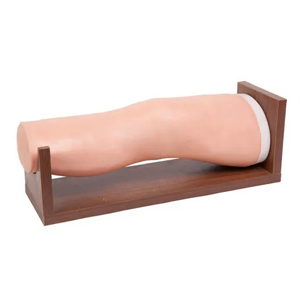Homepageпјҡ NEWS >> Knee cavity injection model, so you can do it in the real world?
In the medical field, especially in orthopedics and pain management, knee cavity injection is a common and important treatment technique. However, the precision and safety requirements of this technology are extremely high, and the slightest mistake can cause unnecessary harm to patients. Therefore, how to do it skillfully in actual combat has become the goal pursued by many medical personnel. The knee cavity injection model is an important tool to help them achieve this goal.
It is a highly simulated training tool that simulates the structure and physiological characteristics of the real knee joint. By using this model for training, medical personnel can more intuitively understand the anatomy of the knee joint, familiar with the location and depth of the injection point, so as to find the injection target more accurately in the actual operation

In actual combat, the advantges of the knee cavity injection model are obvious. First, it provides a safe, risk-free practice environment. Medical staff can practice injection repeatedly without worrying about causing harm to patients, and gradually improve their operation skills and accuracy. This opportunity for repeated practice is crucial to improving injection techniques.
Secondly, it can help medical staff to better grasp the strength and Angle of injection. In practice, the strength and Angle of injection have a crucial impact on the injection effect. Through model training, medical personnel can gradually become familiar with and master these key elements, so that they can be more confident in the actual operation of the injection.
In addition, various complex conditions can be simulated, such as fluid accumulation in the knee joint, inflammation, etc. These simulation situations help the medical staff to better cope with the various challenges that may be encountered in the actual operation, and improve their resilience and problem-solving ability.
In summary, the knee cavity injection model can indeed help medical personnel in actual combat. Through repeated practice and simulation of the actual combat environment, medical personnel can be more familiar with the anatomy of the knee joint, master the injection skills and key elements, and improve the ability to cope with complex situations. Therefore, for medical personnel who want to improve their knee cavity injection technology, the use of knee cavity injection model is undoubtedly a wise choice.